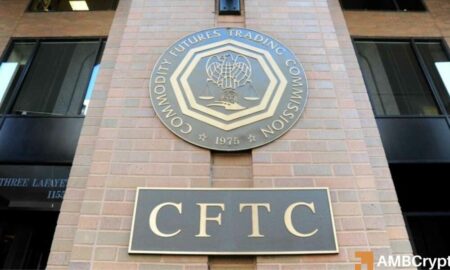The Rise of Stablecoins: A Catalyst for Altcoin Season?
Introduction to Stablecoin Dynamics
In recent weeks, the supply of stablecoins, particularly on the Ethereum network, has seen remarkable growth. With major milestones such as the passing of the GENIUS and STABLE Acts in Congress aimed at enhancing regulations, the stablecoin ecosystem is becoming more secure and transparent. This regulatory clarity promises to protect consumers while potentially establishing the groundwork for an upcoming altcoin season. This surge in stablecoins is more than just a trend; it signals a pivotal moment for the cryptocurrency market and raises important questions about liquidity, consumer confidence, and investment strategies.
All-Time High Stablecoin Demand
As of August 2023, the total supply of stablecoins on the Ethereum network surpassed an unprecedented $130 billion. This surge in stablecoin volume marked a significant recovery from previous lows, highlighting Ethereum’s dominance in stablecoin issuance. The increasing presence of public companies building on the Ethereum network is further contributing to this trend. Historically, surges in stablecoin inflows signify profit-taking activities or the strategic preparation to inject liquidity into non-stable cryptocurrencies. Both factors appear to be at play, indicating an overall bullish sentiment in the market.
Liquidity Drivers Behind the Surge
The current surge in stablecoin supply is not confined to just one blockchain; it’s a widespread phenomenon across various platforms. Experts project that stablecoin supply could account for around 10% of the M2 monetary supply by 2030, equating to a staggering $3 trillion. Notably, PayPal’s PYUSD is nearing the $1 billion mark on Ethereum, while Solana’s stablecoin supply stands at approximately $250 million. Additionally, the liquidity of Tether (USDT) is showing signs of recovery, buoyed by capital rotations from Bitcoin. This rotational activity indicates an increase in market confidence, suggesting that liquidity could become the missing piece for igniting a new altcoin season.
U.S. Crypto Reserve Implications
As the U.S. positions itself to become a leader in the crypto and AI sectors, it currently holds around $347 million in stablecoins. This considerable liquidity could facilitate the establishment of a U.S. crypto reserve primarily composed of Bitcoin and Ethereum. The strategic holding of stablecoins serves as a buffer, allowing the government to navigate market fluctuations while actively participating in the cryptocurrency ecosystem. This opens up avenues for institutional investment, further adding liquidity to various altcoins and contributing to a potential market rally.
Analyzing the Altcoin Season Potential
With stablecoin flows gaining momentum, many market participants are questioning whether this could unlock the next altcoin season. Current data suggests that stablecoin dominance, sitting at around 4.22%, is showing signs of an exhaustion pattern. A significant break below this threshold could pave the way for a robust altcoin rally. Given that altcoins often demonstrate an inverse relationship with stablecoins, a decline in Bitcoin dominance—which has recently dropped from 62.50% to 59.56%—is crucial for a full rotation into altcoins.
Conclusion: The Road Ahead for Altcoins
The current landscape of stablecoins presents both opportunities and challenges for traders and investors. Increased liquidity, propelled by stablecoin growth and strong regulatory backing, positions the market favorably for a potential altcoin season. However, the key lies in monitoring stablecoin dominance and Bitcoin’s market position. As we continue to observe these metrics, it will become clearer whether a new chapter in the cryptocurrency market is about to unfold. Investors must remain vigilant, as the interplay between stablecoins and altcoins could very well determine the next phase of market activity.
















